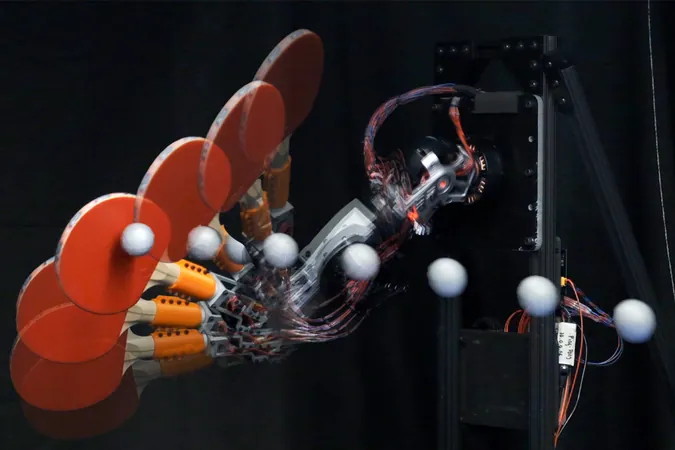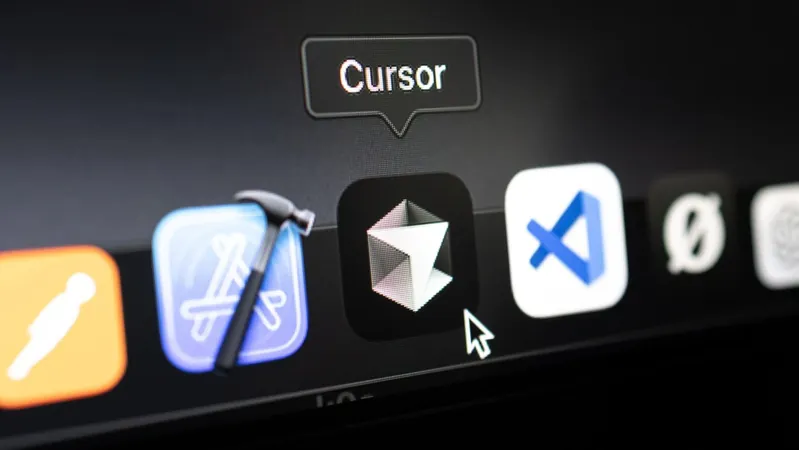
Meet the High-Speed Ping Pong Robot That’s Changing the Game
2025-05-08
Author: Ming
MIT Engineers Unveil a Revolutionary Ping Pong Bot
In an exciting leap for robotics and sports technology, engineers at MIT have introduced a groundbreaking ping pong robot. This innovative machine combines a powerful, lightweight design with extraordinary accuracy, transforming the way we think about robotic competition.
Precision at Play: How the Robot Works
Equipped with a multijointed robotic arm affixed to one end of a ping pong table, this bot cleverly wields a standard paddle. Utilizing high-speed cameras and a sophisticated predictive control system, the robot can rapidly analyze the velocity and trajectory of incoming shots. It then employs one of several swing techniques—loop, drive, or chop—to return the ball to a targeted area on the table with a variety of spins.
Impressive Performance in Testing
In rigorous testing, the bot successfully returned 88% of the 150 balls it faced, showcasing a hit rate across all swing types that rivals, and even exceeds, some human players. With strike speeds nearing the fastest human returns, this robot is no ordinary training partner—it’s a serious contender.
Future Plans: Expanding the Robot’s Abilities
Looking ahead, the MIT team aims to enhance the robot's playing radius, allowing it to tackle a wider array of shots. The vision is to position this robot as a prominent player in the burgeoning field of smart robotic training systems.
Beyond Sports: Potential Applications
The technology developed for this ping pong bot holds immense potential beyond the game itself. Researchers believe it could significantly improve the speed and accuracy of humanoid robots in critical scenarios like search-and-rescue missions, where rapid response and anticipation are key.
An Ongoing Challenge in Robotics Research
Developing a ping pong-playing robot has remained a formidable challenge since the 1980s, requiring advanced machine vision, nimble motors, precise control, and real-time prediction capabilities. MIT’s latest endeavor aims to bridge the gap between dynamic movement and precise manipulation.
Innovative Design Meets Practical Application
The team used a lightweight, high-power robotic arm—part of MIT's Humanoid project—as a base for their design. This adaptation includes unique features for improved ball control and precision, such as an extra degree of freedom in its wrist.
Success Rates and Strike Speeds
Initial results have shown the robot achieving an impressive hit rate of 88.4% for loop strikes, 89.2% for chops, and 87.5% for drives. Adaptations have allowed the robot to strike balls at speeds of up to 19 meters per second, closing in on the swift returns seen in elite human players.
Nearing Human Athleticism
The MIT team is determined to achieve a level of athleticism comparable to that of human players. With ongoing refinements, they’re not far from reaching that goal—setting the stage for future applications and competition.
The Future of Training Robots
As this technology evolves, the potential for a robotic opponent mimicking human maneuvers could revolutionize training for players. Incorporating smart algorithms, the robot can not only strike the ball with precision but also aim for specified locations on the table.
Conclusion: A New Era of Robotics in Sports
With plans to enhance mobility and agility in future versions, MIT's ping pong robot stands as a testament to technological advancement in sports robotics—creating not only a formidable player but a crucial tool for training and innovation in various fields.




 Brasil (PT)
Brasil (PT)
 Canada (EN)
Canada (EN)
 Chile (ES)
Chile (ES)
 Česko (CS)
Česko (CS)
 대한민국 (KO)
대한민국 (KO)
 España (ES)
España (ES)
 France (FR)
France (FR)
 Hong Kong (EN)
Hong Kong (EN)
 Italia (IT)
Italia (IT)
 日本 (JA)
日本 (JA)
 Magyarország (HU)
Magyarország (HU)
 Norge (NO)
Norge (NO)
 Polska (PL)
Polska (PL)
 Schweiz (DE)
Schweiz (DE)
 Singapore (EN)
Singapore (EN)
 Sverige (SV)
Sverige (SV)
 Suomi (FI)
Suomi (FI)
 Türkiye (TR)
Türkiye (TR)
 الإمارات العربية المتحدة (AR)
الإمارات العربية المتحدة (AR)